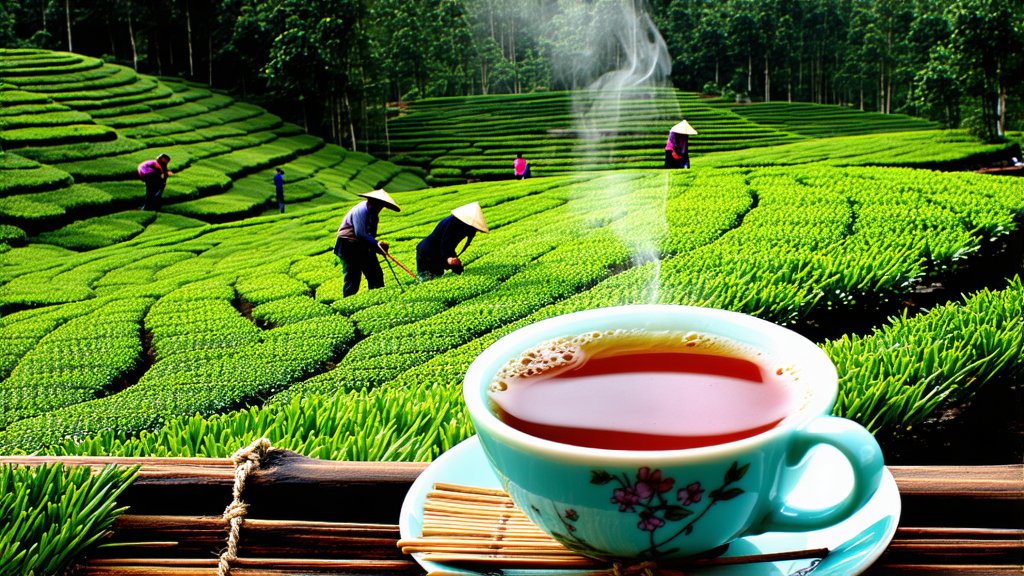
Keemun black tea, hailing from the picturesque hills of Anhui Province in China, is an exquisite variety that stands as a testament to centuries of tea craftsmanship and tradition. With its rich history, unique production process, and distinctive flavor profile, Keemun has earned a well-deserved place among the world's most revered teas. In this exploration, we delve into the origins, varieties, manufacturing techniques, and art of appreciating Keemun black tea, offering international readers a glimpse into the depth and allure of this remarkable Chinese tea.
Historical Background
The story of Keemun tea begins in the early 19th century when it was discovered by a young man named Xu Ganlu. According to legend, he stumbled upon a batch of tea leaves that had undergone natural fermentation due to delays in processing. This serendipitous event led to the creation of what would later be known as Keemun black tea. Its unique flavor quickly gained popularity, earning it the nickname "Prince of Teas" and securing its position as a favorite among tea connoisseurs worldwide.
Varieties of Keemun Black Tea
Keemun black tea comes in several distinct varieties, each with its own characteristics and charm. The two primary types are Mi Lu (Honey Flavor) and Xiang Rong (Fragrant Melody), which refer to the tea's aromatic qualities. Mi Lu is characterized by a sweet, honey-like fragrance, while Xiang Rong boasts a more complex bouquet reminiscent of orchids. Within these categories, there are further subdivisions based on the grade of tea leaves used, ranging from high-grade buds and young leaves to more mature ones.
Crafting the Perfect Cup: The Manufacturing Process
The production of Keemun black tea is a meticulous process that involves several stages, each contributing to the tea's final flavor and aroma. It starts with the careful selection of tea leaves, typically from the Qimen County area, known for its ideal climate and soil conditions for tea cultivation. The leaves are then plucked during the spring season when they are at their freshest and most flavorful.
After plucking, the leaves undergo withering, where they are spread out in thin layers to lose moisture and become softer. This step is crucial as it sets the stage for oxidation, the chemical reaction that gives black tea its characteristic color and taste. Following withering, the leaves are rolled to break down cell walls, releasing enzymes that facilitate oxidation.
Next comes oxidation itself, a process where the leaves are left to react with oxygen, transforming their color from green to a deep brownish-black. The degree of oxidation can vary depending on the desired flavor profile, resulting in different grades of tea. After oxidation, the leaves are fired to halt the oxidation process and remove any remaining moisture, ensuring the tea's longevity and stability.
Finally, the dried leaves are sorted and graded according to size and quality before being packaged for distribution. Each step in this intricate process requires skill and precision, reflecting the artistry and dedication inherent in tea making.
The Art of Tasting Keemun Black Tea
Appreciating Keemun black tea goes beyond merely drinking; it involves engaging all senses in a ritualistic experience. To fully savor its nuances, one must observe the dry leaves, appreciate their appearance and aroma, and note any subtle differences between them. Upon brewing, the tea should be poured into a clear glass or porcelain cup to admire its vibrant amber hue.
As you take your first sip, allow the tea to coat your palate, paying attention to its smoothness and body. Keemun black tea is renowned for its balanced flavor profile, combining sweetness, fruitiness, and a hint of smokiness or earthiness. The aftertaste should linger pleasantly, leaving a refreshing sensation in your mouth.
For an authentic experience, consider pairing Keemun black tea with traditional Chinese snacks such as mooncakes or almond cookies, which complement rather than overpower the tea's delicate flavors. Alternatively, enjoy it solo, allowing yourself to be transported by its aroma and taste to the misty mountains of Anhui Province.
In conclusion, Keemun black tea represents not just a beverage but a cultural heritage steeped in history and tradition. Its journey from humble beginnings to global acclaim speaks volumes about the enduring appeal of fine tea and the timeless art of tea making. Whether you are a seasoned tea enthusiast or new to the world of tea, exploring Keemun offers a captivating glimpse into the depths of Chinese tea culture and the boundless possibilities it holds.